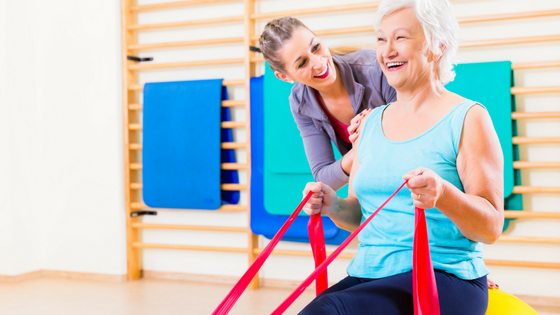Minimize Your Senior Loved One’s Risk of Falling
By Meredith Kimple
We have all fallen at one time or another.
Whether we trip on the edge of a rug or an uneven walkway, slip on a wet floor or a patch of black ice, a fall always ends in a combination of shock, pain, and humiliation (particularly if other people witness it). Mid-fall, we are suddenly aware that there are limits to our bodily control; but standing up after the incident, bruised and a bit shaken, we dismiss that feeling of temporary vulnerability until we experience our next mishap.
That is, if we’re younger and physically fit. For the elderly, the impact of a fall extends beyond the event itself.
It is estimated that more than one out of four adults over the age of 65 falls each year, and that is based only on falls that have been reported. Falling not only takes a critical toll on an elderly person’s body, it can also increase their hospital visits, medical expenses, and do irreparable damage to their confidence.
Why are the elderly at greater risk of falling?
There are several factors that contribute to an older person’s increased risk of falling, including:
- Balance and Motor Impairments
Age-related physical changes may affect an older person’s gait and ability to balance. A lack of exercise, muscle weakness, arthritis, and other medical conditions can also leave older people highly susceptible to falls.
- Vision
Poor eyesight, an outdated eyeglasses prescription, as well as glaucoma and changes in depth perception, can all increase the likelihood of a fall.
- Wrong Footwear
Wearing shoes that are impractical and / or uncomfortable can sabotage an older person’s sense of balance. Slippers, flip-flops, high heels, and smooth-soled shoes provide little traction and support, making walking twice as difficult and falls twice as likely.
- Medications
Certain medications may cause confusion, unsteadiness and dizziness, all of which can lead to falls. Taking four or more medications also increases an older person’s risk of falling.
These are not the only risk factors, but they are a few of the more prominent ones. Other health conditions, sudden drops in blood pressure, poor diet, and advanced age can influence an older person’s stability while moving.
Because approximately six out of every ten falls occurs in the home, we may be especially concerned for our senior loved ones who live alone. If they fall and are unable to get up or access their phone, they could remain hurt and helpless for a prolonged period of time.
The following are a few of the steps we can take to help our senior loved ones minimize their risk of falling.
- Adapt the Home
Since the majority of falls happen within the home, making the necessary modifications to your senior loved one’s living space is very important. Installing handrails (particularly in the bathroom and on the stairs), removing clutter and wires that might be tripped over, securing rugs to the floor, and improving lighting are just some of the changes that can be made to lower an older person’s risk of falling. Mobility aids, like a walker or a wheelchair, may be helpful for moving within the home and out in public.
- Exercise
Though an older person who struggles to maintain their balance may not be able to engage in vigorous physical activity, there are certain gentle exercises that can help improve motor function, like Tai Chi and swimming. Tai Chi in particular provides seniors with a stronger awareness of their bodies, which can reduce their fear of falling, restore their confidence, and improve their balance. If these physical activities are too difficult or strenuous, a physical therapist can help your senior loved one develop an exercise regimen that is tailored to their abilities.
- Consult A Medical Provider
Encourage your senior loved one to report any falls to their doctor. Falling may be an indication of a new health problem, or it could be caused by one or more medications; keeping their doctor informed will help ensure the best decisions are made for their health. Their physician can also assess their fall risk and provide additional ideas for minimizing it.
Falling at an advanced age is more than a little painful or embarrassing; one out of five falls results in serious injury, and once an older person has one, their chance of having another increases significantly. A fall can lead to broken bones, hip fractures, head injuries, a decline in overall health, and, not surprisingly, a crippling fear of falling. If you notice your older loved one suddenly uses furniture or walls to maintain their balance when walking, or if they mention that they fell recently, encourage them to discuss these developments with their doctor.
Instability significantly undermines an older person’s sense of control over their own body, so as their family and friends, we should be there to provide reassurance, suggestions, and a listening ear.







